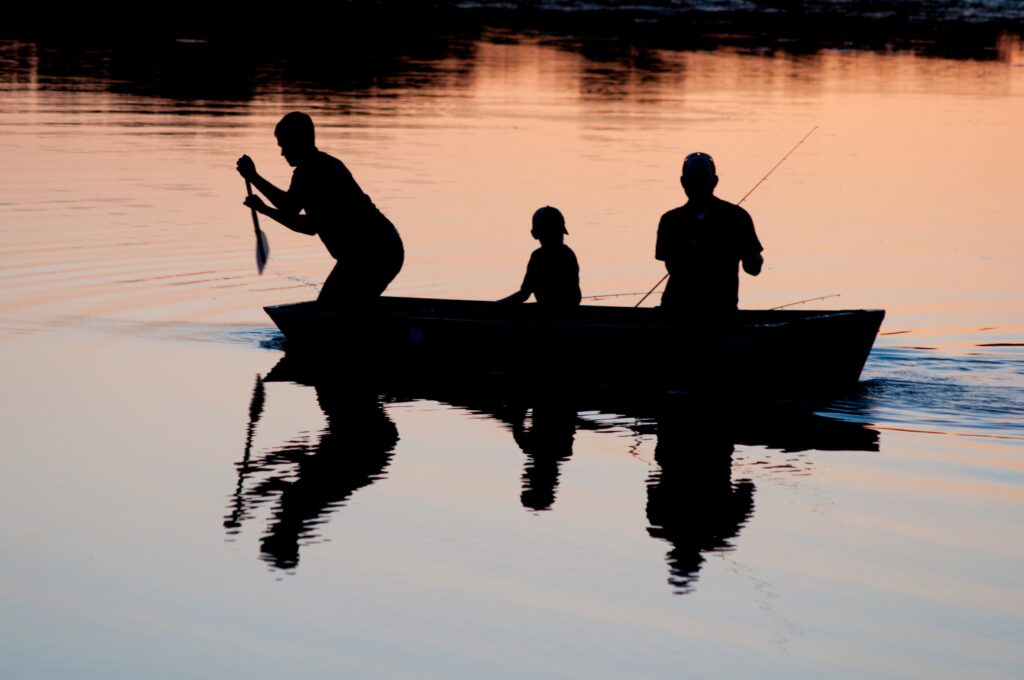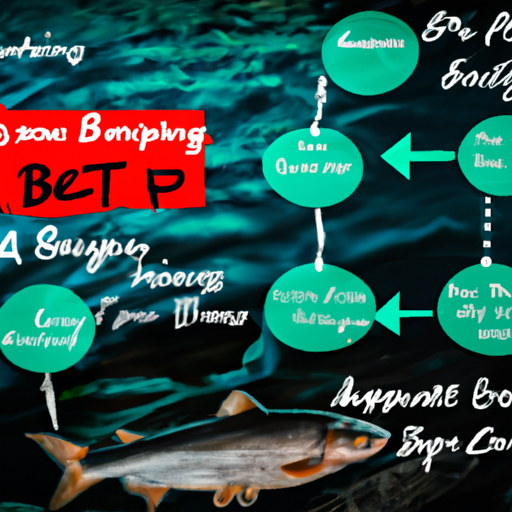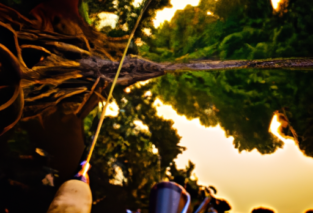Have you recently taken up fishing and found yourself encountering some unexpected challenges? Look no further! “Personal Experiences: Common Beginner Hiccups in Fishing” is here to help you navigate through those initial stumbling blocks and get you on your way to becoming an experienced angler. Filled with relatable stories and practical tips, this guide is tailored specifically for beginners, ensuring that you can avoid the common pitfalls and enjoy a successful and fulfilling fishing journey.

Choosing the Wrong Fishing Gear
Not Considering the Fishing Location
When it comes to fishing, the location plays a crucial role in determining the success of your fishing expedition. Each location has its own unique characteristics, such as the type of fish, the water conditions, and the fishing environment. Therefore, not considering these factors when choosing your fishing gear can greatly hinder your chances of catching fish.
For example, if you’re planning to fish in a freshwater lake, using saltwater fishing gear would be a grave mistake. Freshwater and saltwater fishing require different types of rods, reels, and lines to accommodate the specific conditions of each environment. So, it’s important to do your research and select the appropriate fishing gear that matches the location you’ll be fishing in.
Using the Wrong Fishing Rod and Reel Combo
Choosing the wrong fishing rod and reel combo can lead to frustration and disappointment on your fishing trip. The rod and reel combo you choose should depend on the type of fishing you’ll be doing and the species of fish you’re targeting. Using an inappropriate combo can make it difficult to cast accurately, control the fish, or even feel the bites.
For example, if you’re planning to go fishing in a river where the current is strong, using a lightweight spinning combo might not provide enough power to handle the fish or control the line. On the other hand, if you’re fishing in a lake and using heavy tackle, it might be too overpowering and scare the fish away. So, it’s essential to choose a rod and reel combo that suits the specific fishing conditions you’ll encounter.
Inadequate Fishing Line Strength
One of the most common mistakes beginners make is underestimating the importance of choosing the right fishing line. The fishing line serves as the crucial connection between you and the fish, and its strength can make or break your fishing experience. Using a fishing line that is too weak can result in it snapping when you hook a big fish, while using a line that is too heavy can easily scare away smaller, more cautious fish.
The strength of the fishing line depends on the size of the fish you’re targeting and the fishing technique you’ll be using. For example, if you’re planning to go deep sea fishing and targeting larger species like marlin or tuna, using a thin fishing line won’t be able to handle the extreme pressures and forces exerted by these powerful fish. On the other hand, if you’re fishing for smaller freshwater species, a heavy line might be unnecessary and decrease your chances of getting a bite. Therefore, it’s important to choose the appropriate fishing line strength based on the fish species and fishing technique you’ll be employing.
Lack of Proper Casting Techniques
Improper Wrist Action
Mastering the art of casting is essential for any angler, but improper wrist action can severely hinder your casting effectiveness. The proper wrist action allows for a smooth and accurate cast, while an incorrect technique can result in tangled lines, short casts, or even losing your bait altogether.
To achieve a fluid casting motion, it’s important to use your wrist in a controlled manner. Avoid sudden jerking or excessive force, as this can cause the line to become tangled or snap. Instead, focus on a relaxed grip and a smooth follow-through that extends the line in a straight path. Practicing your wrist action in an open area before heading to the water can greatly improve your casting accuracy and overall fishing experience.
Overcasting
Overcasting refers to casting too far beyond your target area, which can lead to missed opportunities or even getting your line snagged on nearby obstacles. While it may seem tempting to cast as far as possible, it’s important to remember that fish are often found in specific areas and casting beyond these areas may not yield any bites.
Instead of focusing on distance, try to cast with precision and accuracy. Pay attention to your surroundings and aim for specific spots where fish might be hiding, such as near vegetation, under docks, or in the shade. By casting with intention and targeting specific areas, you increase your chances of attracting the attention of nearby fish.
Not Mastering the Backcast
While most beginner anglers focus on the forward cast, mastering the backcast is equally important for a successful fishing trip. The backcast is the motion of moving the fishing line backward before executing the forward cast, and it plays a crucial role in controlling the direction and distance of your cast.
Failing to master the backcast can lead to inaccurate casts, tangled lines, and frustration. To improve your backcast, practice the motion in an open area before heading to the water. Focus on a smooth, controlled motion that allows the line to fully extend behind you before executing the forward cast. By mastering both the forward and backcast, you’ll have greater control over your casting distance and accuracy.

Ineffective Bait Selection
Using the Wrong Bait for the Target Fish
Selecting the right bait is vital in enticing your target fish to bite. Different fish species have varying preferences when it comes to food, so using the wrong bait can result in a lack of interest from the fish.
Researching the feeding habits and preferences of your target fish is crucial in choosing the appropriate bait. For example, if you’re targeting bass, using live bait such as worms or small fish can be highly effective. On the other hand, if you’re after trout, artificial lures that mimic insects or small fish might be more appealing to them. By understanding the preferences of your target fish, you can increase your chances of getting a bite.
Neglecting the Importance of Fresh Bait
Regardless of the type of bait you choose, ensuring its freshness is essential. Fish are attracted to the scent and movement of fresh bait, so using stale or spoiled bait can greatly reduce your chances of success.
When using live bait, such as worms or minnows, make sure to keep them in a cool, aerated container to maintain their freshness. Replace any bait that appears sluggish or weak, as fish are more likely to target lively and energetic prey. For artificial baits, regularly inspect them for any damage or wear and tear that may affect their appearance or movement in the water. By prioritizing the freshness of your bait, you’ll attract more fish and greatly increase your chances of a successful catch.
Not Matching the Bait to the Fishing Environment
In addition to considering the preferences of your target fish, it’s important to match the bait to the fishing environment you’ll be in. Different fishing environments, such as lakes, rivers, or saltwater, have variations in water clarity, current strength, and the presence of specific prey.
When fishing in clear water, using natural-colored baits or lures that mimic local prey can be highly effective in enticing fish to bite. On the other hand, in murky or muddy water, using bright, flashy baits can help fish locate and strike your bait. Additionally, consider the depth at which your target fish are feeding. Using sinking baits or adjusting the weight of your bait can help you reach the desired depth and increase your chances of attracting fish. By adapting your bait selection to the fishing environment, you’ll be able to effectively entice fish and maximize your fishing success.
Poor Knot Tying Skills
Incorrectly Tying the Basic Knots
Properly tying knots is essential for any angler, as it ensures the strength and integrity of your fishing setup. However, incorrectly tying basic knots can result in lost fish, broken lines, and frustration on the water.
Taking the time to learn and practice basic knots, such as the improved clinch knot or the Palomar knot, can greatly improve your fishing experience. These knots provide reliable and secure connections between your mainline, leader, and hooks or lures. There are numerous resources available, including online tutorials and illustrated guides, that can help you master these essential knots. By correctly tying your knots, you’ll have peace of mind knowing that your setup is secure and reliable.
Using Weak Knots that Easily Come Undone
Another common mistake that beginners make is using weak knots that easily come undone. Weak knots can result in lost fish, broken lines, and a decreased chance of landing your catch. It’s important to choose knots that are not only easy to tie but also provide maximum strength and durability.
Opting for reliable knots with a high breaking strength, such as the Uni knot or the Trilene knot, can greatly enhance your fishing experience. Such knots are known for their dependability and ease of tying, making them suitable for anglers of all skill levels. By using strong knots, you’ll be able to confidently hook and battle fish without worrying about your knots failing under pressure.
Failing to Wet and Tighten Knots Properly
One crucial step that beginners often overlook when tying knots is wetting and tightening them properly. Wetting the knot before tightening it reduces friction and helps prevent the line from weakening or breaking during the fishing process. Neglecting to wet your knots can result in friction-generated heat, which weakens the line and makes it more prone to fail.
Additionally, ensuring that your knots are properly tightened is essential for maintaining their strength. Tighten the knot gradually by pulling both ends of the line simultaneously, rather than applying excessive force at once. This helps prevent the knot from slipping or cutting into the line. It’s also a good practice to trim any excess line after tying the knot, as it minimizes the chances of tangling or interfering with your casting. By wetting and tightening your knots properly, you’ll ensure a secure and durable connection that enhances your chances of landing fish successfully.

Insufficient Knowledge of Fish Behavior
Not Understanding the Feeding Habits of Fish
Having a good understanding of the feeding habits of fish is crucial for a successful fishing trip. Fish have different feeding patterns, such as feeding more actively during certain times of the day or targeting specific prey during particular seasons. Failing to understand these feeding habits can result in missed opportunities and a lack of bites.
Researching the target fish species and their feeding habits can provide valuable insights into the best fishing times and bait choices. For example, some fish are more active during early morning or late afternoon, while others feed throughout the day. By aligning your fishing trips with the feeding habits of your target fish, you’ll increase your chances of encountering actively feeding fish and enjoy a more fruitful fishing experience.
Misjudging Fish Movement Patterns
Fish movement patterns can vary depending on the species and the specific fishing location. Understanding these patterns is crucial in determining where fish might be located and how they behave in different conditions. Misjudging fish movement patterns can result in wasted time and effort in unproductive areas and can greatly decrease your chances of catching fish.
Observing the movement of fish in the water, as well as studying local fishing reports or information from experienced anglers, can provide valuable insights into fish behavior. For example, some fish species have predictable migration patterns and move from deep to shallow waters during specific times of the year. By understanding and anticipating these movement patterns, you can position yourself in the right area and increase your chances of encountering fish.
Lack of Knowledge About Fish Spawning Seasons
Fish spawning seasons can greatly influence their behavior and feeding patterns. During spawning seasons, fish may become less active in feeding and focus more on reproduction and protecting their nests. Failing to consider these spawning seasons can result in frustration and disappointment on the water.
Researching and understanding the spawning seasons of your target fish is essential for planning your fishing trips. By avoiding fishing during their spawning seasons, you not only give the fish a chance to reproduce without disturbance but also increase your chances of encountering actively feeding fish during other times. Knowing when to fish and when to give the fish space to spawn is crucial for a responsible and successful fishing experience.
Improper Hook Setting
Setting the Hook Too Late
Proper hook setting is crucial to ensure that the fish is securely hooked and doesn’t escape during the fight. However, many beginners make the mistake of setting the hook too late, resulting in missed opportunities and lost fish.
When you feel a bite or see a visible indication of a fish striking your bait, it’s important to react quickly and set the hook. Delaying the hook set can give the fish time to spit the bait out or detect your presence, causing them to drop it. Setting the hook promptly and with enough force ensures that the hook penetrates the fish’s mouth and provides a secure connection.
Setting the Hook Too Early
While setting the hook too late can result in missed fish, setting the hook too early can also be detrimental to your fishing success. Fish often nibble or play with the bait before committing to fully biting it. Setting the hook too early can result in pulling the bait away from the fish, thus missing the opportunity for a successful hook set.
Patience is key when it comes to hook setting. Wait until you feel a solid pull or see a distinct movement indicating that the fish has fully taken the bait into its mouth. This ensures a greater chance of a successful hook set and ultimately landing the fish.
Not Applying Enough Force to Properly Set the Hook
Properly setting the hook requires a balance of force. Failing to apply enough force can result in a weak hook set, allowing the fish to easily escape. On the other hand, applying excessive force can lead to snatched bait or even broken lines.
When setting the hook, it’s important to apply a firm and steady force to drive the hook into the fish’s mouth. Avoid jerking or yanking excessively, as this can cause the hook to tear out or the line to snap. By using the right amount of force and maintaining a steady pressure, you’ll increase your chances of a secure hook set and successfully bringing the fish to shore.

Ignoring Weather and Environmental Factors
Fishing during Inactive Fish Feeding Times
Fish are more active during certain times of the day, while they may be less inclined to feed during others. Ignoring these feeding times can result in wasted efforts and a lack of bites.
Researching the feeding times of your target fish species and adjusting your fishing trips accordingly can greatly improve your chances of success. For example, many freshwater fish tend to be more active during early morning or late afternoon when the water is cooler and there is less fishing pressure. By aligning your fishing trips with these active feeding times, you’ll increase your chances of encountering fish that are actively seeking food.
Not Paying Attention to Wind Direction
Wind direction plays a significant role in the behavior of fish, as it affects the movement and distribution of food sources in the water. Ignoring wind direction and blindly casting your bait can result in fishing in unproductive areas and missing out on potential catches.
By paying attention to the wind direction and casting your bait against the wind, you’ll be able to take advantage of the natural movement of food sources in the water. This increases the chances of attracting fish as they follow the bait carried by the current. Additionally, fishing with the wind at your back can make it easier to cast accurately and cover a larger area. By being mindful of wind direction, you’ll optimize your fishing strategy and increase your chances of a successful catch.
Neglecting the Impact of Water Temperature on Fish Behavior
Water temperature is a crucial environmental factor that influences the behavior of fish. Fish are cold-blooded creatures, meaning their body temperature is dependent on their surroundings. Ignoring water temperature can result in fishing in unproductive areas or using ineffective bait choices.
Different fish species have specific temperature preferences, which can determine their feeding activity and movement patterns. For example, some fish are more active in warmer water, while others thrive in cooler temperatures. By understanding the temperature preferences of your target fish, you can adjust your fishing techniques and bait choices accordingly. This ensures that you’re presenting the bait at the optimal temperature range for the fish species you’re targeting, increasing your chances of success.
Failure to Scout and Locate Fish
Not Researching and Scouting Potential Fishing Spots
Before heading out for a fishing trip, it’s essential to research and scout potential fishing spots. Failing to do so can result in wasted time and effort in unproductive areas where fish are scarce.
By researching and gathering information about potential fishing spots, such as local reports, online forums, or advice from experienced anglers, you’ll be able to narrow down your options and focus on areas that have a higher likelihood of holding fish. Factors to consider include the species of fish present, the seasonal patterns, and the availability of suitable habitat and food sources. By investing time in scouting and selecting the right fishing spots, you increase your chances of a successful and rewarding fishing experience.
Fishing in Crowded or Overfished Areas
Fishing in crowded or overfished areas can result in intense competition and diminished chances of catching fish. Fish in these areas have likely been exposed to high fishing pressure and may become wary or less responsive to bait.
To increase your chances of success, it’s wise to avoid crowded areas where other anglers are present. Instead, seek out quieter and less-frequented spots that are less likely to be overfished. Exploring new or less popular fishing spots can lead to exciting discoveries and encounters with more actively feeding fish. By avoiding crowded areas and exploring new fishing spots, you’ll enhance your chances of finding areas with abundant fish populations and increase your overall fishing success.
Ignoring Visual Clues and Fish Movement
Pay attention to visual clues and fish movement in the water, as they can provide valuable insights into where fish might be located. Ignoring these clues can cause you to overlook prime fishing spots and decrease your chances of a successful catch.
Visual clues can include fish breaking the surface, birds diving into the water, or even ripples and disturbances on the surface indicating fish activity. Observing these visual cues can help you identify areas where fish are actively feeding or congregating. Additionally, pay attention to the movement of fish in the water, such as jumping or swirling, as it can indicate the presence of actively feeding fish. By being attentive to visual clues and fish movement, you’ll be able to identify potential hotspots and position yourself in the right area for a successful catch.

Lack of Patience and Persistence
Expecting Instant Success
One of the common pitfalls for beginners is having unrealistic expectations and expecting instant success on every fishing trip. Fishing requires patience, and it’s important to understand that not every cast will result in a biting fish.
By managing your expectations and embracing the process of fishing, you’ll enjoy the experience more fully. Fishing is not only about catching fish but also about connecting with nature, enjoying the peaceful environment, and refining your angling skills. Embrace the journey, and every fish you catch will be a rewarding achievement.
Not Giving Enough Time for Fish to Bite
Fishing requires time and patience, as it often takes a while for fish to notice and bite the bait. Many beginners make the mistake of not giving enough time for fish to become interested and strike.
When casting your bait, it’s important to allow it enough time to sink and reach the desired depth. After casting, give it a few seconds or even minutes before reeling in and recasting. Fish are naturally cautious and may take their time to inspect and approach the bait. By being patient and giving the fish enough time to bite, you increase your chances of a successful and rewarding catch.
Relocating Too Often and Not Staying in One Spot
While it’s important to explore new fishing spots and avoid unproductive areas, constantly relocating without giving each spot enough time can be counterproductive. Fish may take time to find and respond to your bait, and constantly moving can disrupt their feeding patterns.
Instead of constantly relocating, give each fishing spot enough time to prove its potential. Observing the fish activity in the area and paying attention to bites or nibbles can provide insights into the presence of fish. If a spot has shown potential, be patient and persist for a reasonable amount of time before considering a new location. By staying in one spot and being persistent, you’ll increase your chances of discovering productive fishing spots and landing more fish.
Neglecting Safety Precautions
Not Wearing Appropriate Safety Gear
Safety should be a top priority when engaging in any outdoor activity, including fishing. Neglecting to wear appropriate safety gear can lead to accidents, injuries, or even life-threatening situations.
When fishing, it’s important to wear a properly fitted life jacket, especially if you’ll be fishing from a boat or in deep water. Even if you’re an experienced swimmer, unexpected accidents can happen, and a life jacket can save your life. Additionally, wearing appropriate footwear, such as non-slip shoes or boots, can prevent slips and falls on slippery surfaces, especially when wading in rivers or fishing from docks.
Other safety gear, such as a hat to protect against the sun, sunglasses to shield your eyes, and sunscreen to prevent sunburn, are also important considerations. By prioritizing safety and wearing appropriate gear, you’ll ensure a safe and enjoyable fishing experience.
Fishing in Unsafe or Restricted Areas
Fishing in unsafe or restricted areas can put you and others at risk, as well as harm the environment. It’s important to research and adhere to local fishing regulations and guidelines to ensure a responsible and safe fishing experience.
Restricted areas, such as private property, designated conservation areas, or areas with safety hazards, should be avoided. These areas are often marked with signs or may be subject to specific regulations. Engaging in fishing activities in restricted areas not only violates the law but can also harm sensitive ecosystems or put you in physical danger.
Before heading out to fish, familiarize yourself with the local fishing regulations, obtain any necessary permits, and respect the rights of private property owners. By fishing responsibly and within the bounds of the law, you’ll enjoy a safe and sustainable fishing experience.
Lack of Knowledge about Local Fishing Regulations
Every fishing location has its own set of regulations and guidelines that anglers must adhere to. Ignoring or neglecting these regulations can result in fines, legal troubles, and damage to fish populations and their habitats.
Before embarking on a fishing trip, it’s essential to familiarize yourself with the local fishing regulations. This includes knowing the fishing seasons, size and bag limits, catch-and-release guidelines, and any specific gear restrictions. These regulations are designed to protect fish populations, maintain healthy ecosystems, and ensure a sustainable fishing experience for all.
Researching local fishing regulations can be done through government websites, fishing associations, or by consulting with local bait shops or fishing guides. By following the rules and regulations, you’ll be a responsible angler and contribute to the conservation and preservation of fish populations for future generations to enjoy.
To become a successful angler, it’s important to address and rectify common beginner hiccups. By avoiding the mistakes outlined above and adopting the necessary skills and knowledge, you’ll increase your chances of a successful fishing experience. Remember, fishing is not just about catching fish, but also about enjoying nature, acquiring new skills, and forging lasting memories on the water. So grab your gear, be patient, and embrace the beauty of fishing for a rewarding adventure every time you cast your line.





